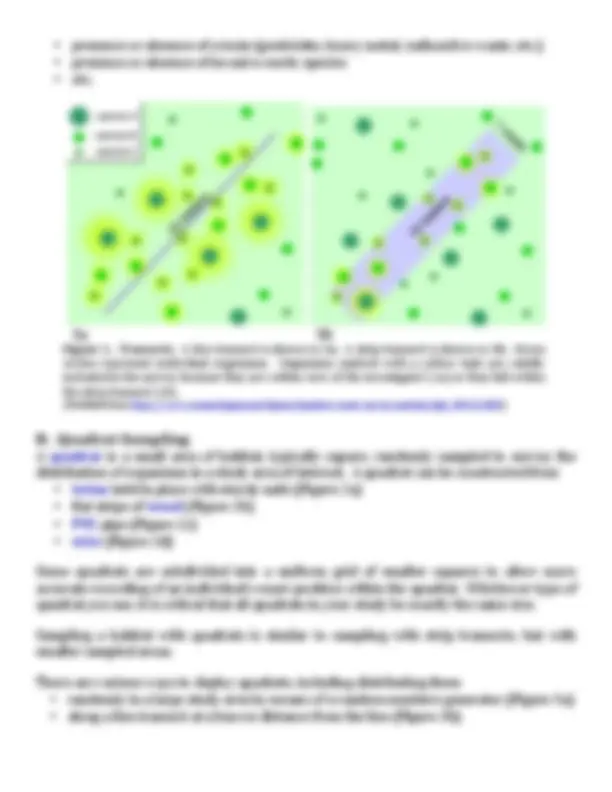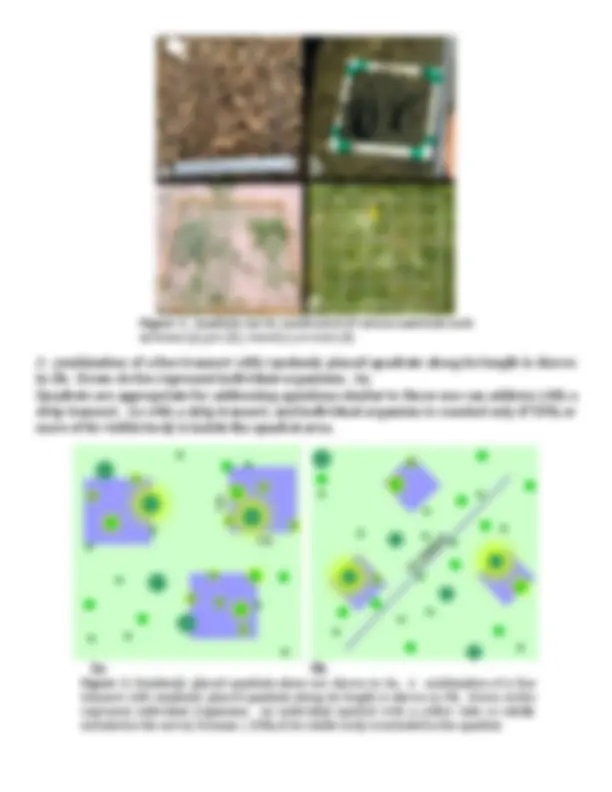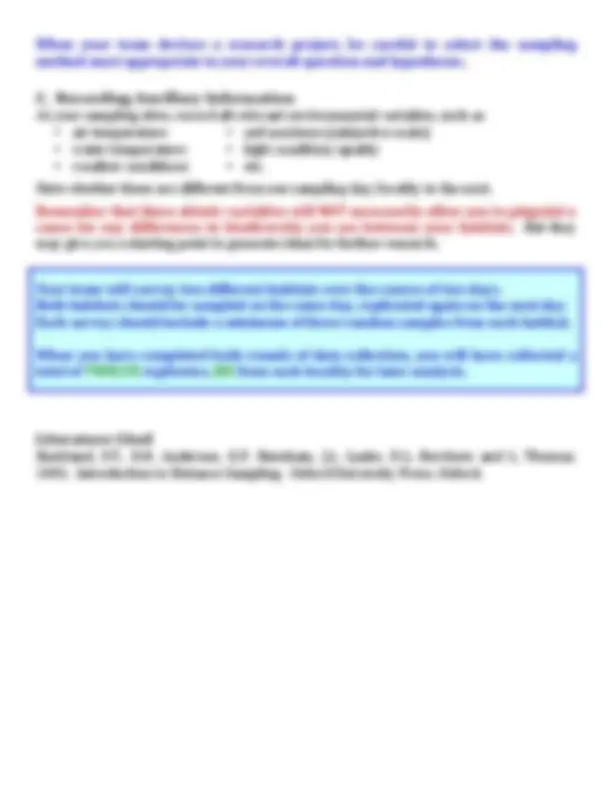





Study with the several resources on Docsity

Earn points by helping other students or get them with a premium plan


Prepare for your exams
Study with the several resources on Docsity

Earn points to download
Earn points by helping other students or get them with a premium plan
Community
Ask the community for help and clear up your study doubts
Discover the best universities in your country according to Docsity users
Free resources
Download our free guides on studying techniques, anxiety management strategies, and thesis advice from Docsity tutors
The methods for collecting samples in the Evolution and Biodiversity Laboratory, focusing on the use of transects and quadrats for estimating species diversity and community composition. the concepts of line transects and strip transects, as well as quadrat sampling, and provides instructions for recording relevant data. useful for university students conducting biodiversity research projects.
What you will learn
Typology: Lecture notes
1 / 5

This page cannot be seen from the preview
Don't miss anything!




This section of the manual provides some background regarding the methods you will use. You will collect samples from two different terrestrial habitats of your team’s choice.
Whenever you collect a sample, record pertinent all information , such as
Unlike research projects you may have done in the past, your survey of biodiversity will not involve comparing treatment and control samples or manipulating a variable. Instead, you will be performing a pilot study comparing the biodiversity of two naturally occurring ecosystems that you predict could differ for a stated, logical reason of interest. The study of biodiversity often requires measurement of species diversity, species richness, and other measures of community composition. There are several different ways to approach this task. The most appropriate method will often depend on the question you are asking. Different methods can be used to estimate the number of individual organisms present in a study area of interest. The most obvious, of course, is simply to count them all. But this is often logistically impossible in a very large study area. Instead, a population’s or community’s parameters can be estimated by randomly sampling small subsets of the entire study area. Two commonly used methods that ensure random sampling transects and quadrats. Random placement of transects or quadrats ensures that statistical inferences from collected data can validly be applied to the larger study area.
A transect is a straight line (or narrow section) through a habitat, along which observations are made or measurements taken. Ecologists commonly employ transects to randomly sample diversity in natural habitats. A transect line doesn’t have to be high tech. A length of strong twine, marked with distance increments in indelible ink, can serve as well as a measuring tape.
1. Line Transect A line transect (Figure 1a) is a (usually) straight line marked by a measuring tape, string, or other material along which the investigator moves and samples data at known, set intervals. Observed individual organisms of interest are tallied, and their distance from the transect is recorded. A ruler or meter stick can be placed perpendicular to the transect line to measure the distance of an individual organism from the transect line, or to take a sample at a particular distance from the transect line. Several assumptions are made in using a line transect (Buckland, et al., 2001): - A sufficient number of transects are randomly placed, independently of the distribution of - All individuals on the transect line are detected. - Organisms on the transect move more slowly than the investigator. - Distances are accurately measured. A line transect is appropriate for illustrating changes in biodiversity along a gradient of some kind, such as - high to low tide lines - shady to sunny areas - soil moisture levels at various distances from a body of water - pollutant levels at various distances from a particular source - etc. 2. Strip Transect A strip transect (Figure 1b) is a small subsection of known length and width randomly placed in a study area. All organisms of interest that fall within the strip are counted, which limits the practical size of the strip. Multiple, randomly placed strip transects can allow estimation of community characteristics in the larger study area of interest. An estimate of total population density of one or more species can be extrapolated from their densities in multiple, randomly placed strip transects. Strip transects can be useful for examining the overall difference in biodiversity parameters between two habitats that differ in some aspect, such as - recent disturbance - abiotic factors such as light, pH, wind exposure, soil moisture etc.
Figure 2. Quadrats can be constructed of various materials such as twine (a), pvc (b), wood (c), or wire (d) A combination of a line transect with randomly placed quadrats along its length is shown in 2b. Green circles represent individual organisms. An Quadrats are appropriate for addressing questions similar to those one can address with a strip transect. As with a strip transect, and individual organism is counted only if 50% or more of its visible body is inside the quadrat area. 3 a 3 b Figure 3. Randomly placed quadrats alone are shown in 2a. A combination of a line transect with randomly placed quadrats along its length is shown in 2b. Green circles represent individual organisms. An individual marked with a yellow halo is validly included in the survey because > 50% of its visible body is included in the quadrat.
When your team devises a research project, be careful to select the sampling method most appropriate to your overall question and hypotheses.
At your sampling sites, record all relevant environmental variables, such as
Buckland, S.T., D.R. Anderson, K.P. Burnham, J.L. Laake, D.L. Borchers and L. Thomas.